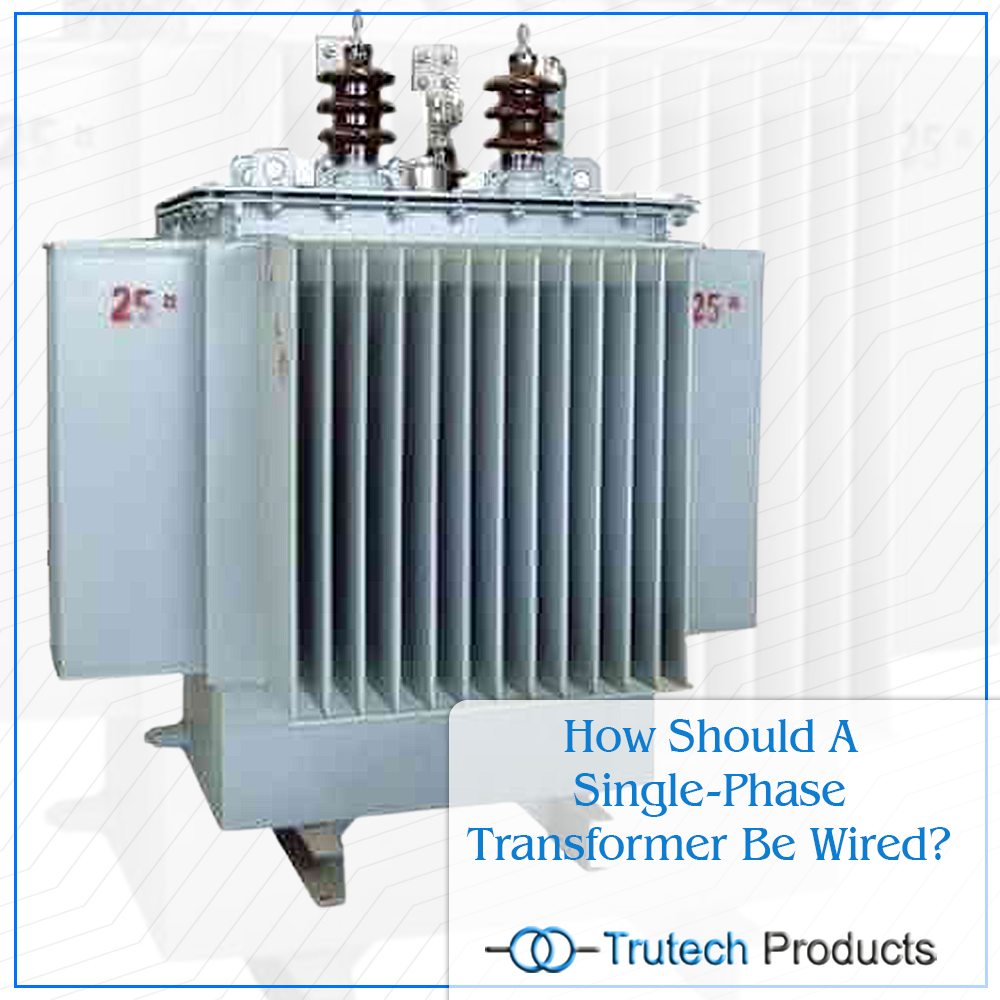
When the primary voltage of a Single-Phase Transformer is higher than the secondary voltage, it is referred to as a step-down transformer. The voltage going from the primary winding to the second wiring is supposed to be lowered by it. One of the reliable Single-Phase Transformer Manufacturers In Mumbai is Trutech Products which produces high-quality transformers. Today we will walk you through the process of wiring a single-phase transformer in this blog post. Let's begin:
- Step 1: To install a single-phase transformer, you must know its rating and schematic. If the transformer draws a lot of currents, remove the cover from the terminal connection box. Confirm both sides of the circuit's protection are switched off and unplugged.
- Step 2: Determine the single-phase transformer's appropriate termination. H1, H2, H3, and H4 are used as terminations to represent the high voltage side. X1, X2, X3, and X4 are the transformer's low voltage side. The ending remains precise regardless of the transformer's size, although the connectivity of the transformer varies depending on the manufacturer and input voltage.
- Step 3: The input wires should be connected before being cut along the lug. The quantity of wire that fits in the crimping region is another factor.
- Step 4: Join the insulating outer cover. It will let the wire's current flow through it. After that, press the wire lug against the copper wire that has been stripped. The connection device should be securely crimped to the wire.
- Step 5: Carefully terminate the high-voltage side of the single-phase transformer. Observe whatever instructions the manufacturer may have provided.
- Step 6: As per the manufacturer's direction, connect the low-voltage side of the single-phase transformer. Included in this is the particular configuration that must be adhered to. There are only two terminals—X1 and X2—in tiny control transformers.
- Step 7: Put an end to the control transformer for X1 and X2 alike. The X1 terminal passes through a fuse frequently designed for the circuit before direct connection to the control circuit. The X2 connector is used for grounding protection and is connected to the control circuit's neutral side.
- Step 8: Change the shield and any other areas that interfere with the current flow on the Single-Phase Transformer. Set the feeder power circuit to its initial state before applying high voltage to the transformer. The safety circuit should be turned on on the low side.
- Step 9: The voltage on the single-phase transformer should be checked. The main goal is to check the voltage precisely as listed on the manufacturer's list.
If you're still not persuaded, we, one of the top Transformers Manufacturers In India, are prepared to provide you with types and design transformers specifically for you following your requirements. Connect with our professional who can help you choose the best. Call us directly or drop your email now.

